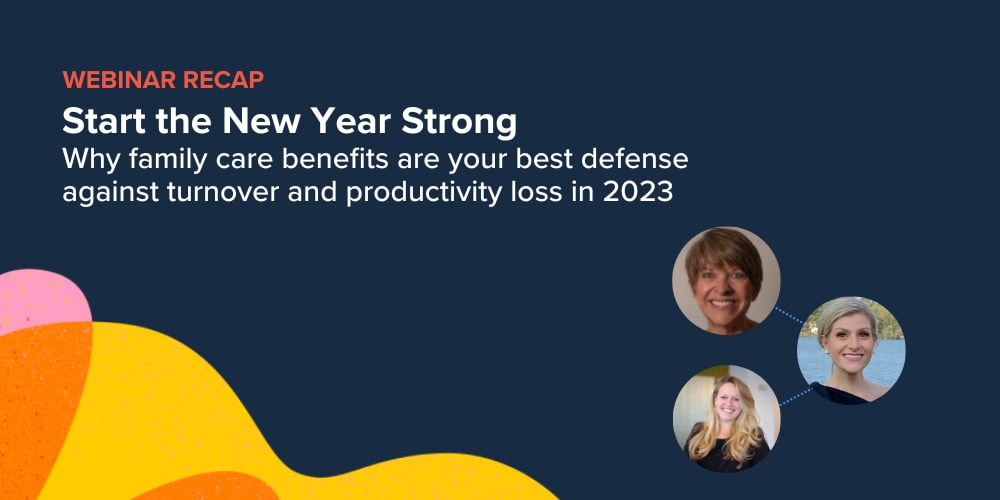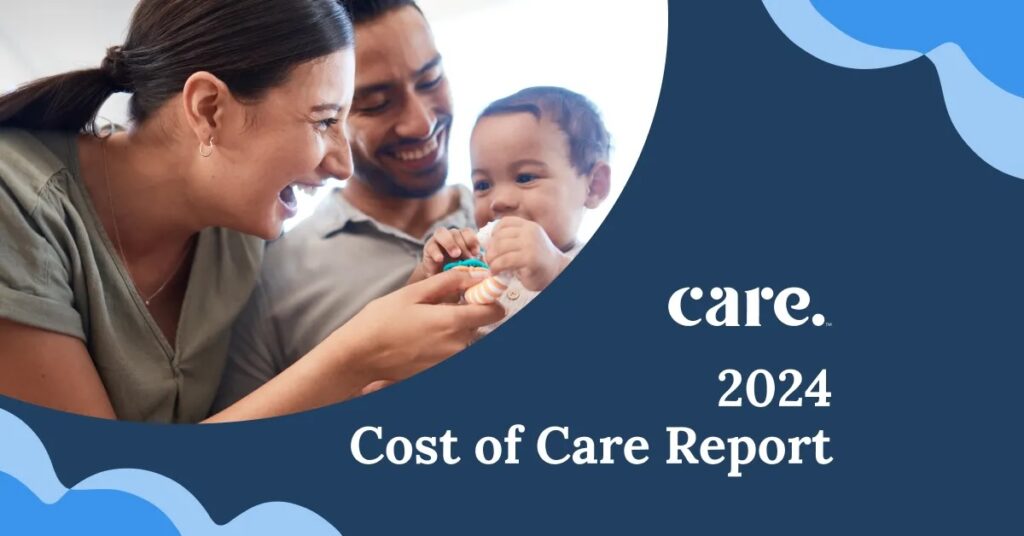Care for Business hosted a webinar with Society for Human Resource Management (SHRM) in January with benefit experts Lou Ann Hutchison from Grant Thornton, and Care.com Head of Human Resources, Stephanie Manzelli.
Driving the conversation was the recognized need for organizations to improve employee productivity and retention efforts amid a dwindling economy. Whether a company is downsizing, right-sizing, or even growing its workforce, there is a sufficient need for family care benefits to help boost their bottom line.
Key Takeaway #1: The strain of today’s economy impacts your working caregivers’ productivity
73% of the American workforce currently cares for a loved one at home. Examine the current demographic of your employees. Imagine the generations your workforce spans and consider how many people are currently tasked with caring for a child at home, a senior loved one, and even a pet.
Care.com conducted a Cost of Care Survey last year that shed light on the unsettling state of child care.
- With inflation on the rise, child care is now more expensive for 63% percent of parents.
- Coupled with labor shortages felt across a number of industries, the nation is experiencing a short supply of caregivers. 43% of the parents we surveyed said it’s much harder to find child care providers than it was a couple of years ago.
It’s important to examine ways organizations can help ease these burdens from an employer standpoint. Stephanie noted her belief that it’s an employer’s job to support their workforce in meaningful ways so that they can remain productive and successful, and to avoid their top talent searching for greener pastures.
Lou Ann expanded the conversation to include the hit an employee’s productivity takes when having to navigate these rough waters. Today’s workforce is tasked with finding solutions to these challenges all while remaining productive at work. Something easier said than done.
The challenges faced by working caregivers not only affects their productivity, but also has an impact on presenteeism in the workplace. This gives employer’s the opportunity to leverage a variety of solutions to address the problem at hand. That is where family care benefits and work/life solutions come into play.
Lack of outside help is a problem, and an employee’s caregiving responsibilities should not be something they have to hide behind.
Key Takeaway #2: Design a Culture of Care to Improve Employee Satisfaction and Employer Brand
Being able to establish a “culture of care” within an organization is vital to improving employee satisfaction rates and boosting employer brand. This all starts with understanding your business strategy. Examine your priorities and then consider how your people strategies align with and support your business strategy.
Once you’ve done this, you can design and tailor an approach to your total rewards program that will be seen as a culture of care within the organization.
Part of building that culture means measuring your program’s success and remaining flexible as the needs of employees evolve. A few things to consider measuring:
- Employee retention
- Absentee statistics
- Employee satisfaction surveys
- Benefit engagement and enrollment rates
Establishing a culture of care is not just about employee retention, but finding ways to connect with your colleagues so they feel cared for, supported, motivated, and fully engaged in their work.
Key Takeaway #3: Designing an inclusive caregiving benefits strategy means flexible access, costs, and options
Harvard Business Review recently published a study with data from over 800 U.S. companies compiled over the last 30 years. Their findings concluded that organizations that offer work/life benefits have employees with better mental and physical health, higher productivity, and lower turnover rates. They also found that these companies have a higher number of women and people of color in management positions.
We know that the best family care benefits strategy is one that supports every employee at every life stage and creates benefit equity among the workforce. But where do you start in your own design?
- The cost to your employees – Total rewards leaders need to consider cost factors when selecting their benefits and provide their employees with adequate education about their options.
- Providing choice and flexibility – Providing choice and flexibility allows your benefits package to support all employees at each life stage and through each season.
- Personalizing the experience for your employees – It’s important to choose a benefits program that can custom-fit the right solution to each individual.
- Making sure your benefit offering is representative of your workforce – Representation matters in the case of benefit selection within your organization. It’s important to choose programs that use diverse imagery and inclusive language within their website, on their platform and in their marketing materials. It’s marketing 101, people want to shop and utilize offerings that mirror the world around them.
Grant Thornton has saved over 1,600 days of missed work with their employees since implementing their family care benefits program, and 130 hours of productivity with the help of Care Specialists. Learn more about the impact from their benefit strategy here.
Key Takeaway #4: Advocating for investments in family care means refining your approach based on your audience
Balancing between protecting and promoting the interest of your business and the interest of your employees is a fine line to walk.
When it comes to benefit offerings, HR leaders have to be the employee’s advocate, but you also need to know your audience in doing so. Do you lead with direct business and financial impact and outcomes or do you lean into less metric-based outcomes and rely on the “people” outcome? Our experts say it’s best to present both.
Some people are data-driven, while others are more relationship-oriented. That’s why we stress knowing your audience.
- Do your research – Know the ins and outs of your employee demographic and specific needs. Understand current benefit gaps and identify where productivity losses are currently stemming from.
- Identify business need – Bring your research with a clear cut plan on how you intend to solve the business problem by implementing these new benefits
- Stress the importance of the employer/employee relationship – Talk with your employees and gather real-life examples of their current struggles and difficulties within their working environment.
If you’d like to learn more about boosting employee engagement and productivity with the help of family care benefits within your own organization, meet with a Care expert today.






